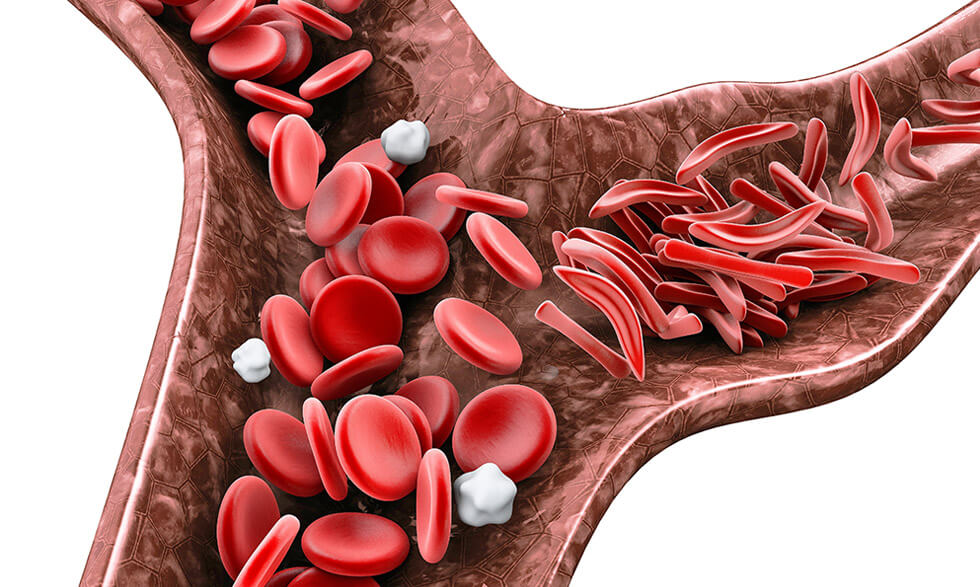
What is it?
Sickle cell disease is a group of red blood cell disorders passed by genes from parents to their children. People with the disease have abnormal hemoglobin, a protein in red blood cells that carries oxygen in the body.
Sickle hemoglobin is not like normal hemoglobin. Sickle-shaped cells are not flexible and can stick to vessel walls. This causes a blockage that slows or stops the flow of blood. When this happens, oxygen can’t reach nearby tissues.
What are the symptoms?
The lack of tissue oxygen can cause attacks of sudden, severe pain, called “pain crises.” These attacks can occur without warning and a person often needs hospitalization for treatment. Most children with sickle cell disease are pain-free between pain crises, but adolescents and adults may suffer from ongoing pain.
The red cell sickling and poor oxygen delivery can also cause organ damage over time and anemia, a blood condition which makes you feel tired or weak.
Who does it affect?
Approximately 100,000 Americans have sickle cell disease. In the U.S. most of these people are of African ancestry or self-identify as black.
- About one in 13 African-American babies is born with sickle cell trait.
- About one in every 365 black children is born with
sickle cell disease.
There are also many people with this disease who come from Hispanic, southern European, Middle Eastern, or Asian Indian backgrounds.
How is it diagnosed?
A blood test can show if you have the trait or anemia. Most states test newborn babies as part of their newborn screening programs.
Learn how you can participate in NHLBI clinical trials related to sickle cell disease on NHLBI’s website.
Treating sickle cell disease
Sickle cell disease is a lifelong illness. The only cure is a well-matched stem cell transplantation, but this procedure is not widely available to everyone. However, there are other effective treatments that can reduce symptoms and prolong life. Early diagnosis and regular medical care to prevent complications also contribute to improved well-being. Potential treatments include:
- Stem Cell Transplantation: Stem cells are a type of unspecialized cell that can change into a more specialized cell, such as a healthy red blood cell, under certain conditions. In stem cell transplantation, doctors replace a patient’s bone marrow with stem cells from a healthy, fully-matched donor (usually a sibling). It is a growing option for people with sickle cell disease.
- Gene Therapy and Gene Editing: The National Heart, Lung, and Blood Institute is leading a nationwide study to test the effects of an experimental gene therapy to treat sickle cell disease that involves removing a patient’s bone marrow and then adding copies of a correctly spelled gene for normal hemoglobin to generate normal red blood cells. Only a handful of patients have undergone the procedure in the U.S. They include three at the NIH Clinical Center in Bethesda, Maryland. Researchers are also exploring the feasibility of gene editing, an approach that aims to edit the blood-generating stem cells outside the body to correct the sickle cell mutation and then reinsert the corrected stem cells into the bone marrow.
- Stimulating Fetal Hemoglobin Production: NHLBI researchers are studying the genetic factors behind sickle cell disease. This includes fetal hemoglobin, which protects an infant from sickle cell disease for the first six months after birth.
